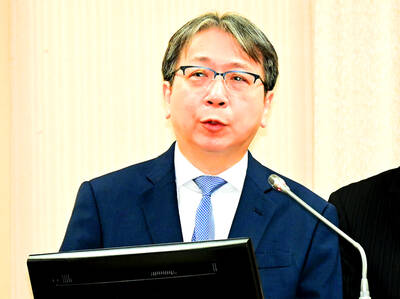Trade and tourism between Taiwan and nations targeted by the New Southbound Policy launched by President Tsai Ing-wen (蔡英文) have grown considerably, Executive Yuan Office of Trade Negotiations data showed.
From January to August, trade between Taiwan and the 18 countries targeted by the policy rose 5.5 percent from a year earlier to US$77.07 billion, the data showed.
During the period, Taiwan’s exports to the targeted countries rose 3.2 percent annually to US$45.33 billion, while imports rose 9.1 percent to US$31.74 billion.
In the first eight months of this year, nationals of the 18 countries made a total of 1,636,360 visits to Taiwan, up 16.9 percent from a year earlier and accounting for 22.9 percent of total inbound tourists over the period, the data showed.
Meanwhile, Taiwanese made 1,923,742 visits to the targeted nations, up 13.8 percent from a year earlier and accounting for 16.8 percent of all outbound trips, office data showed.
The latest policy handbook published by the office for this year showed that the number of visits by people from the 18 nations was 2,284,000 last year, up by 496,000 visits, or 27.6 percent, from 2016, a person with knowledge of the matter said.
Taiwanese last year made 2,474,000 visits to the targeted nations, up by 240,000 visits, or 10.8 percent, from the year before, said the source, who spoke on condition of anonymity.
The office plans to continue facilitating “soft” exchanges with the targeted nations by boosting the number of mutual visits to foster a sense of friendliness, familiarity and recognition, the source said.
The handbook also said that the government has named public projects as a potential avenue through which it can further improve relations with the targeted nations, the source added.
The office aims to secure projects with a combined annual budget of at least US$20 billion and would focus on five areas: power plants, the petrochemical industry, intelligent transportation systems, metro systems and environmental protection, they said.
Taiwan last year secured 17 public projects in the targeted nations with a combined bidding price of US$25.2 billion and won 20 projects with a total bidding price of US$25 billion in the first seven months of this year, the source said.

The US government has signed defense cooperation agreements with Japan and the Philippines to boost the deterrence capabilities of countries in the first island chain, a report by the National Security Bureau (NSB) showed. The main countries on the first island chain include the two nations and Taiwan. The bureau is to present the report at a meeting of the legislature’s Foreign Affairs and National Defense Committee tomorrow. The US military has deployed Typhon missile systems to Japan’s Yamaguchi Prefecture and Zambales province in the Philippines during their joint military exercises. It has also installed NMESIS anti-ship systems in Japan’s Okinawa

‘WIN-WIN’: The Philippines, and central and eastern European countries are important potential drone cooperation partners, Minister of Foreign Affairs Lin Chia-lung said Minister of Foreign Affairs Lin Chia-lung (林佳龍) in an interview published yesterday confirmed that there are joint ventures between Taiwan and Poland in the drone industry. Lin made the remark in an exclusive interview with the Chinese-language Liberty Times (the Taipei Times’ sister paper). The government-backed Taiwan Excellence Drone International Business Opportunities Alliance and the Polish Chamber of Unmanned Systems on Wednesday last week signed a memorandum of understanding in Poland to develop a “non-China” supply chain for drones and work together on key technologies. Asked if Taiwan prioritized Poland among central and eastern European countries in drone collaboration, Lin

ON ALERT: Taiwan’s partners would issue warnings if China attempted to use Interpol to target Taiwanese, and the global body has mechanisms to prevent it, an official said China has stationed two to four people specializing in Taiwan affairs at its embassies in several democratic countries to monitor and harass Taiwanese, actions that the host nations would not tolerate, National Security Bureau (NSB) Director-General Tsai Ming-yen (蔡明彥) said yesterday. Tsai made the comments at a meeting of the legislature’s Foreign Affairs and National Defense Committee, which asked him and Minister of National Defense Wellington Koo (顧立雄) to report on potential conflicts in the Taiwan Strait and military preparedness. Democratic Progressive Party (DPP) Legislator Michelle Lin (林楚茵) expressed concern that Beijing has posted personnel from China’s Taiwan Affairs Office to its

BACK TO WORK? Prosecutors said they are considering filing an appeal, while the Hsinchu City Government said it has applied for Ann Kao’s reinstatement as mayor The High Court yesterday found suspended Hsinchu mayor Ann Kao (高虹安) not guilty of embezzling assistant fees, reducing her sentence to six months in prison commutable to a fine from seven years and four months. The verdict acquitted Kao of the corruption charge, but found her guilty of causing a public official to commit document forgery. The High Prosecutors’ Office said it is reviewing the ruling and considering whether to file an appeal. The Taipei District Court in July last year sentenced Kao to seven years and four months in prison, along with a four-year deprivation of civil rights, for contravening the Anti-Corruption